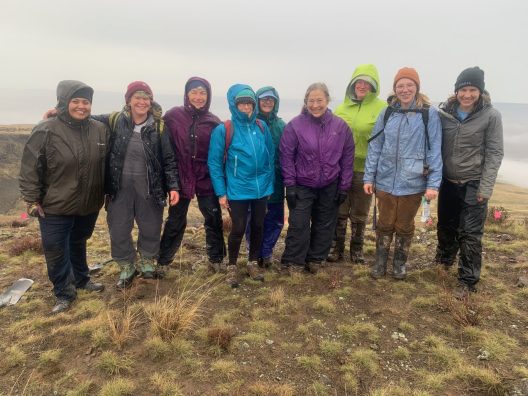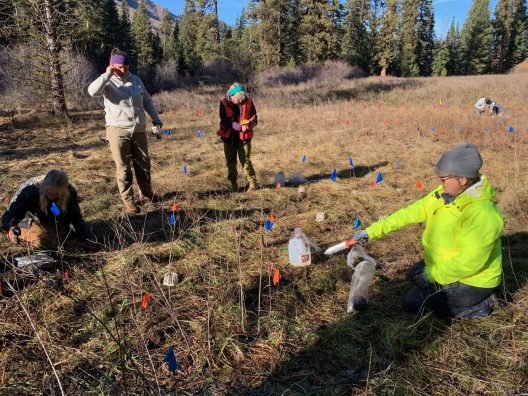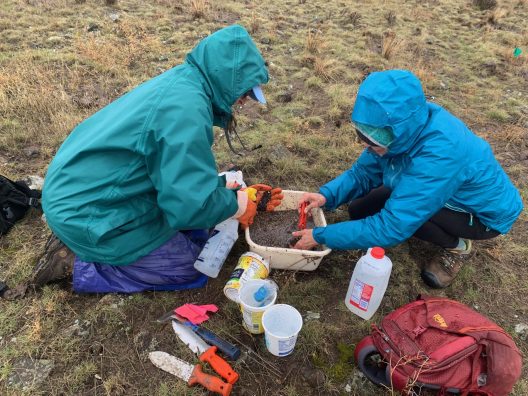Planting for Recovery

Planting 672 plugs and sowing 45,000 seeds by hand takes no small effort. That was our goal this past fall when we planted Wenatchee Mountains checker-mallow (Sidalcea oregana var. calva) at three sites in Chelan County and Umtanum desert buckwheat (Eriogonum codium) at one site in Grant County. Fortunately, we had three days, nine volunteers, seven agency partners, one graduate student, one faculty, two undergrads and three staff to get it all done.
Awaiting final environmental review and approvals, we scheduled our checker-mallow planting for early November. Wind, cold and even a little snow did not dampen our spirits as our team split into two the first day, with half meeting at Camas meadows to plant a site further south and the other half meeting in Cashmere to plant a site in Swakane Canyon. The next day, with new volunteers and students joining in, we all spent the day in Tronsen meadow planting the remaining site. These plantings will help us evaluate what site characteristics are optimal for checker-mallow survival and whether a viable self-sustaining population can be established at each to meet the Recovery criteria for this endangered plant.
We designed our planting plan to evaluate how microsite affects plug survival and seedling recruitment. We planted plugs in clusters of 13 in 3m by 3m plots selected to represent the variety of microhabitats in the planting area. Each site received approximately 210 plugs arranged in 19 clusters. In other 3m x 3m plots, we placed two 1m x 1m plots within them and seeded one with 500 seeds. We pre-treated the seeds with heat scarification to promote germination. Over the next couple of years, we will check survival, count seedlings and assess recruitment.
In December, we headed to Hanford Reach National Monument to plant 48 Umtanum desert buckwheat plugs to a site on Saddle Mountain where previous plugs had been planted and several plants persist. Therefore these outplantings will augment this nascent population and allow us to continue to develop information to successfully introduce this species.
The buckwheat plugs were grown by Derby Canyon Natives and seven volunteers and one member of the Wanapum Tribe helped us plant, a great example of how plant conservation requires a community effort. We barefooted each plug by carefully washing the potting soil off the roots at the site and capturing the water and soil in pans for later disposal. While this took more time, the work went quickly and we were able to complete the job by early afternoon despite a steady rain. We look forward to returning to the site this spring to see how well these small plugs are doing.

